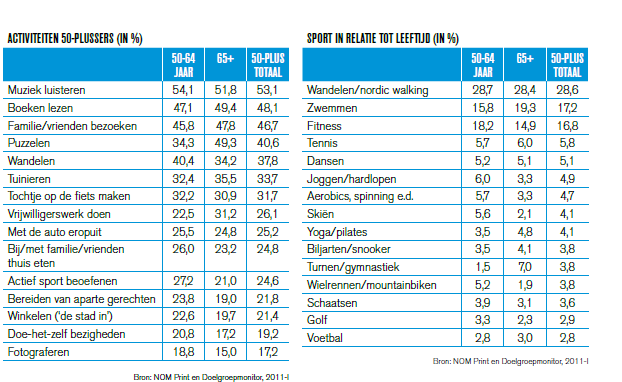s op 2.9: lock-out/tag-out contents 1. introduction =============== this document establishes minimum performance requirements
S OP 2.9: Lock-Out/Tag-Out
Contents
1. Introduction
===============
This document establishes minimum performance requirements for the
control of unexpected start-up or energization (release of stored
energy) of equipment during routine adjustment or maintenance.
Lock-Out/ Tag-Out (LOTO) requirements include mandatory staff training
for any equipment that has the potential for unexpected start-up.
2. Regulatory and contractual requirements
==========================================
LOTO requirements are established in the HHW program and state agency
contract (Exhibit A, part B) and in OSHA General Industry Standard 29
CFR 1910.147-150. To review LOTO definitions, see Attachment A of this
SOP.
3. Implementing the LOTO program
================================
Required steps
1.
Perform risk assessment to determine which equipment requires a
LOTO program.
2.
Formulate necessary LOTO steps and procedures.
3.
Provide staff training on proper LOTO procedures.
4.
Perform LOTO inspections and audits.
5.
Document the completion of the above steps to ensure procedures
are followed correctly.
3.1 Perform risk assessment
1.
A designated staff person shall be responsible for LOTO program
implementation. For this Program, the authorized and designated
LOTO person is the Facility Manager.
2.
Determine if hazardous energy sources are present in the Facility
3.
Evaluate Facility equipment to determine if it requires a LOTO
program
4.
Determine if staff will require LOTO training
3.2 Formulate necessary LOTO steps and procedures
1.
Recognize the means and methods of isolating energy.
2.
Verify effective energy control.
3.
Manage energy by the magnitude and type.
4.
Implement a flexible program specific to this Facility.
5.
Provide provisions for staff safety when specific work situations
arise (e.g., troubleshooting).
3.3 Provide staff training on proper LOTO procedures
3.3.1 Training content. LOTO training includes both initial and
refresher. The designated LOTO person shall authorize appropriate
staff to receive mandatory training, which shall include:
*
Understanding the energy controls purpose, scope, and procedures
used.
*
Reviewing changes in equipment practices or processes.
*
Encouraging individual responsibility during the LOTO process.
*
Instructing staff to ask questions when in doubt.
*
Ensuring Facility staff affected by the energy control procedures
are instructed about prohibition relating to attempts to restart
or reenergize equipment.
*
Ensuring training is not performed by staff utilizing the energy
control procedure being inspected.
3.3.2 Affected staff types. Facility staff whose occupation requires
equipment operations is subject to the LOTO requirements. LOTO
training is based on the relationship of the equipment being
de-energized and the degree of knowledge that staff possess with
regards to hazardous energy. There are three types of affected staff:
*
“Authorized” staff perform the actual energy control procedure.
They know the details, how the hazards shall be controlled and
isolated, and have the proper knowledge and skills required (e.g.,
electricians, maintenance engineers, staff with expertise).
*
“Affected” staff are those who normally use the equipment that is
undergoing repair. They may be in the area during equipment LOTO
and repair.
*
“All” staff refers to any person near LOTO equipment as they need
to understand the importance of these procedures.
3.3.3 Refresher training. Authorized or affected staff shall receive
additional training when:
*
Their job assignments change.
*
New hazards are introduced into the work environment
*
Energy control procedures change.
*
Inspections reveal deviations from or inadequacies in the energy
control procedures.
*
Inspections reveal deficiencies in the program or staff knowledge.
3.4 Perform LOTO inspections and audits
1. Assessing procedures and correcting deviations of inadequacies
identified during the inspection
2. Enforcing compliance and immediately ceasing equipment operations
if violations are noted
3. Specific equipment testing procedures are in place to determine the
effectiveness of LOTO and other energy control devices; see Attachment
B of this SOP
5.
Documentation
The designated LOTO person shall provide and maintain documentation of
hazard analysis. This shall be developed to aid in determining program
adequacy and to ensure procedures are followed correctly, including:
*
Verify and document that all qualified persons have had
appropriate LOTO training.
*
Review of the LOTO program for compliance on an annual basis.
*
Review of injuries related to equipment operations.
*
Provide common procedures used for specific equipment, identified
by type and location used to control hazardous energy (including
shutdown).
*
Document periodic inspections.
*
Provide evaluation. See Attachment C of this SOP.
*
Revise the written LOTO program as required. See Attachment D of
this SOP.
3.6 Facility exemption. Electrical equipment (with a cord and plug)
that is being serviced is exempt from LOTO requirements if the plug is
under direct control of the person providing the maintenance service.
Ensure equipment is unplugged prior to servicing.
Attachment A
LOTO Definitions
----------------
Authorized service staff: The person who is responsible for LOTO of
machines or equipment in order to perform servicing or maintenance.
This staff person shall be appointed by the designated LOTO person.
Designated LOTO person: Specific and designated Facility staff who is
responsible for implementing the LOTO Program and meeting all
requirements therein.
Energized: Connected to an energy source or containing residual or
stored energy.
Energy control program: LOTO or energy control procedures that are
designed to prevent unexpected start up or energization of equipment.
Energy isolating device: Energy isolating devices include any
mechanical mechanism that physically prevents, blocks, or isolates
energy transmission release. These may include an on/off switch or:
*
disconnect switch
*
line valve
*
block
*
Chains
*
Ball valve releases
*
Wheel valve covers
*
Blank or blind flanges
*
Circuit breaker covers
*
manually operated electrical circuit breaker
*
manually operated switch by which the conductors of a circuit can
be disconnected from all ungrounded supply conductors (no pole can
be operated independently)
Push buttons, selector switches, and other control circuit type
devices are not energy isolating devices.
Energy source: Any source capable of emitting energy, including:
electrical
mechanical
hydraulic
pneumatic/air
chemical
thermal
gravity
vacuum
solar
wind
vapors/gas
water pressure/steam
nuclear
thermal
Live-dead-live rule: A test for zero energy state where the operator
tries to start the equipment, then shuts it down, then tries to start
it again.
Lock-out: The placement of a LOTO device on an energy isolating device
(in accordance with established procedures) to ensure that the energy
isolating device and the equipment being controlled cannot be operated
until the LOTO device is removed.
LOTO: The lock-out/tag-out procedure.
LOTO devices: A device that utilizes a secure means, such as a lock
(either key or combination type), to hold an energy isolating device
in the safe position and prevent the energizing of machines or
equipment. LOTO devices shall be:
*
durable
*
standardized by color, shape, or size
*
substantial
*
identifiable
*
secured to prevent accidental removal (e.g., they have to be
removed by force)
Qualified person: Staff familiar with construction or the operation of
equipment and the hazards involved. This qualified person has the
skills and the techniques to distinguish live parts from other parts
of electric equipment. This person can also determine the nominal
voltage of exposed live parts and can maintain the clearance distances
specific for the voltages on which they shall be working.
Servicing and/or maintenance: Workplace activities such as
constructing, installing, setting up, adjusting, inspecting,
modifying, and maintaining or servicing machines or equipment. These
activities include lubrication, cleaning, unjamming, and making
adjustments or tool changes, where staff may be exposed to the
unexpected energization or start-up of the equipment or release of
hazardous energy.
Tag-out: The placement of a tag on an energy isolating device in
accordance with an established procedure, to indicate that the
equipment being tagged out shall not be operated until the tag is
removed.
Tags: Energy isolating devices includes items which can be locked out
and those which cannot be locked. When the device cannot be locked
out, Facility staff may use tags (not bypass tags), providing they
are:
*
legible and understandable by all staff
*
able to withstand the work environment
*
securely attached to the equipment
*
only used when the employer can guarantee full staff protection by
using the tag-out system
*
only used as warning devices and do not evoke a false sense of
security
Attachment B
Lock-Out/Tag-Out Annual Inspection Form
---------------------------------------
Ensure Facility staff is able to perform the following functions to
ensure energy control procedures are correctly being followed:
*
How to perform a shutdown.
*
How to isolate equipment.
*
How to apply and remove LOTO devices.
*
How to safely release stored energy to ensure a zero-energy state
exists.
*
Authorized staff performing the LOTO inspection certifying it has
been performed:
_____________________________________________________
*
Date of inspection: _____________________
*
Specific machine or equipment:
_____________________________________
*
List all applicable Facility staff included in the inspection:
_______________________________________________
_______________________________________________
_______________________________________________
_______________________________________________
_______________________________________________
_______________________________________________
_______________________________________________
_______________________________________________
Attachment C
Lock-Out/Tag-Out Procedure Compliance Checklist
-----------------------------------------------
1. Is all machinery or equipment capable of movement required to be
de-energized or disengaged, blocked, and locked-out during cleaning,
servicing, adjusting or set-up operations?
2. If disconnecting the power does not also isolate the electrical
control circuit
*
Are the appropriate electrical enclosures identified?
*
Are means provided to assure control of the circuit?
3. Are all equipment control handles provided with a means for LOTO?
4. Does the LOTO procedure require that stored energy (mechanical,
hydraulic, air, etc.) be released or blocked before equipment is
locked-out for repairs?
5. Is authorized staff required to keep personal control of their
key(s) while safety locks are in use?
6. Is it required that only authorized staff exposed to the hazard
place or remove the LOTO device?
7. Is it required that authorized staff check the safety of the
lock-out by attempting a start-up after making sure no one is exposed?
8. Is authorized staff instructed to always push the control circuit
stop button prior to re-energizing the main power switch?
9. Is there a means provided to identify authorized staff working on
LOTO equipment by their locks or accompanying tags?
10. Are a sufficient number of accident preventive signs or tags and
safety padlocks provided for any reasonably foreseeable repair
emergency?
11. When machine operations require staff to leave the control
station, and part of the machine could move, is the machine required
to be locked or blocked out?
12. In the event equipment cannot be shut down with LOTO, is a safe
job procedure established and rigidly followed?
Attachment D
The LOTO process
----------------
1.
Preliminary steps
Only authorized staff responsible for controlling hazardous energy
shall ensure that procedures are followed for the safe operation of
equipment. Unauthorized staff shall never attempt to start up a piece
of equipment that has been properly LOTO. LOTO shall occur when
servicing takes place during Facility operations or when any of the
following conditions exist:
*
If staff must bypass guards or interlocks to perform the repair at
the point of operation.
*
If staff must place part of their body in contact with the point
of operation source or into a danger zone.
2.
Prepare for shutdown
*
Staff shall obtain assistance when necessary to properly repair or
service a piece of equipment
*
Notify appropriate staff that equipment needs repair or adjustment
*
Ensure only authorized staff are performing service or maintenance
operations
*
Ensure only authorized staff use appropriate testing devices on
the circuits according to the voltage level
*
Notify appropriate staff that “STOP” buttons, interlocks, or other
devices on equipment are not acceptable LOTO devices
3.
Application of locks and tags
*
Equipment not designed to accept locks shall be tagged out of
service. (This can only be done when it can be demonstrated that
tagging shall provide an equivalent means of safety.)
*
Place locks and tags on the equipment used to de-energize circuits
on which the work is to be performed
*
Attach a lock to ensure that unauthorized personnel cannot re-open
the circuit
*
Place a “Danger—Do Not Operate” tag on the energy source and/or
control panel prior to working on the equipment. The tag shall
state that unauthorized use is forbidden and that the tag cannot
be removed.
*
Only the person who applied the lock(s) and tag(s) may remove LOTO
devices. The only instance in which a LOTO device may be removed
is when staff is not at work to remove it and the “qualified
person” contacts the staff to receive permission that it is
acceptable to remove their LOTO device.
4.
Isolating circuits
*
Shut down of the equipment or circuitry ensures de-energization
prior to servicing, or when the potential for unexpected release
of energy exists.
*
When LOTO is implemented, shut down, isolate, block, and secure
equipment.
*
Equivalent means of safety may include removal of an isolating
circuit element, opening of an extra disconnecting device, or
blocking a controlling switch.
*
All LOTO devices shall be left in place while equipment is being
repaired or adjusted.
*
Stored non-electrical energy that could re-energize the electrical
circuits shall be blocked or relieved to the extent possible.
*
Verify isolation by testing the equipment.
*
Ensure safe positioning of Facility staff and make them aware of
equipment or areas requiring LOTO.
*
Perform test procedures to verify that equipment that is back fed
or has induced voltages has indeed been de-energized.
*
Verify alternate sources of power that could be introduced into
the electrical circuit.
*
Shut down the equipment or circuitry equipment.
*
Prior to working on the equipment, ensure all energy sources are
locked out and verify that no residual energy exists following
LOTO (e.g., live-dead-live rule).
5. Repair, reenergization, and LOTO removal
*
Review equipment safety manuals.
*
Repair, adjust, replace, or inspect the equipment.
*
Do not attempt to restart equipment until it is verified that it
is safe to do so following repair.
*
Following the servicing, verify all staff are clear of the
circuits and equipment when it is re-energized.
*
only authorized staff shall perform tests and visual inspections
to ensure re-energization can take place.
*
staff who are present at the re-energization shall be informed of
any hazards and warned again to stay clear of the process.
*
remove all electrical jumpers, grounds, shorts, and other devices
prior to re-energization.
*
remove locks and/or tags.
*
reenergize the equipment.
*
notify affected staff that equipment servicing and/or maintenance
has been completed.
SOP 2.9Lock-Out/Tag-Out 9
 1GROTE DOELGROEP NEDERLAND TELT INMIDDELS MEER DAN
1GROTE DOELGROEP NEDERLAND TELT INMIDDELS MEER DAN MERCADO DE IDEAS PARA LA GESTIÓN EN MATERIA DE
MERCADO DE IDEAS PARA LA GESTIÓN EN MATERIA DE 14 8 GAS FLOW IN PIPES AND POROUS MEDIA
14 8 GAS FLOW IN PIPES AND POROUS MEDIA c Arlos Miguel Giménez 4676 esq Mons Sinforiano Bogarín
c Arlos Miguel Giménez 4676 esq Mons Sinforiano Bogarín TEACHER BACKGROUND UNIT 2 MARINE ENVIRONMENTS MARINE ENVIRONMENTS
TEACHER BACKGROUND UNIT 2 MARINE ENVIRONMENTS MARINE ENVIRONMENTS INSTITUTO DE EDUCACIÓN SECUNDARIA INSTITUTO DE EDUCACIÓN SECUNDARIA ITURRALDE
INSTITUTO DE EDUCACIÓN SECUNDARIA INSTITUTO DE EDUCACIÓN SECUNDARIA ITURRALDE UNE DÉPENDANCE AUX RÉSEAUX SOCIAUX ? EXERCICES 1 –
UNE DÉPENDANCE AUX RÉSEAUX SOCIAUX ? EXERCICES 1 – 15 M ONTO QUE SE ACUMULA AL INVERTIR UN
15 M ONTO QUE SE ACUMULA AL INVERTIR UN INFORME SOBRE ZIPRASIDONA IM OLANZAPINA IM COMISIÓN DE FARMACIA
INFORME SOBRE ZIPRASIDONA IM OLANZAPINA IM COMISIÓN DE FARMACIA 3 WAFSOPSG5WP12 INTERNATIONAL CIVIL AVIATION ORGANIZATION WORKING PAPER WAFSOPSG5WP12
3 WAFSOPSG5WP12 INTERNATIONAL CIVIL AVIATION ORGANIZATION WORKING PAPER WAFSOPSG5WP12 AJUNTAMENT D’ESPARREGUERA SOL·LICITUD DE LLICÈNCIA URBANÍSTICA D’OBRES MENORS SERVEI
AJUNTAMENT D’ESPARREGUERA SOL·LICITUD DE LLICÈNCIA URBANÍSTICA D’OBRES MENORS SERVEI